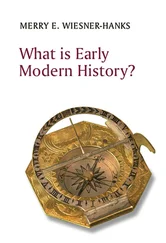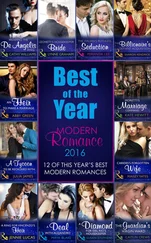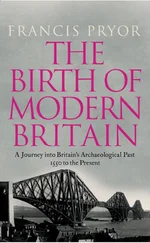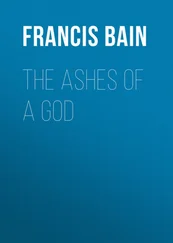R. Nisbet Bain - The Cambridge Modern History
Здесь есть возможность читать онлайн «R. Nisbet Bain - The Cambridge Modern History» — ознакомительный отрывок электронной книги совершенно бесплатно, а после прочтения отрывка купить полную версию. В некоторых случаях можно слушать аудио, скачать через торрент в формате fb2 и присутствует краткое содержание. Жанр: unrecognised, на английском языке. Описание произведения, (предисловие) а так же отзывы посетителей доступны на портале библиотеки ЛибКат.
- Название:The Cambridge Modern History
- Автор:
- Жанр:
- Год:неизвестен
- ISBN:нет данных
- Рейтинг книги:4 / 5. Голосов: 1
-
Избранное:Добавить в избранное
- Отзывы:
-
Ваша оценка:
- 80
- 1
- 2
- 3
- 4
- 5
The Cambridge Modern History: краткое содержание, описание и аннотация
Предлагаем к чтению аннотацию, описание, краткое содержание или предисловие (зависит от того, что написал сам автор книги «The Cambridge Modern History»). Если вы не нашли необходимую информацию о книге — напишите в комментариях, мы постараемся отыскать её.
The first series was planned by Lord Acton and edited by him with Stanley Leathes, Adolphus Ward and George Prothero.
The Cambridge Modern History Collection features all five original volumes:
Volume I: The Renaissance
Volume II: The Reformation, the End of the Middle Ages
Volume III The Wars of Religion
Volume IV: The 30 Years' War
Volume V: The Age of Louis XIV
The Cambridge Modern History — читать онлайн ознакомительный отрывок
Ниже представлен текст книги, разбитый по страницам. Система сохранения места последней прочитанной страницы, позволяет с удобством читать онлайн бесплатно книгу «The Cambridge Modern History», без необходимости каждый раз заново искать на чём Вы остановились. Поставьте закладку, и сможете в любой момент перейти на страницу, на которой закончили чтение.
Интервал:
Закладка:
Yet the cultivation of Latin style, while it was so salient a trait of the Italian revival, was only one of its manifold energies. The same study of the classical writers which incited men to imitate their form inspired also the wish to comprehend their subject-matter. There was a widespread desire to enter into the ideas and the meaning of the ancient Greek and Roman civilisations. Italians were especially eager to reconstruct an image, as distinct as possible, of the manner in which their ancestors had lived. But the aids to such study, now so abundant, did not yet exist. There were no dictionaries of mythology, of biography, of antiquities, no treatises on classical archaeology, no collections of inscriptions. A teacher in the earlier time of the Renaissance, when he dictated an all-embracing commentary to his pupils, had to rely mostly on the stores gathered by his own reading. The erudite labour done by the Italian humanists was of great variety and volume. Many of the more eminent scholars published notes, critical or exegetical, on the Greek or Latin authors whom they expounded in their lectures; but such work has left comparatively few distinctive traces, having been either absorbed into later books, or superseded. Latin translations from the Greek classics formed an important department of humanistic work, and were of the greatest service, not only at the Renaissance but long afterwards, in diffusing the study of Greek literature. The learned humanist Tommaso Parentucelli, who became Pope Nicholas V in 1447, was especially zealous in promoting such translations, many of which were made at Rome during his pontificate. Greek residents in Italy contributed to the work. But Italians were not less active; indeed there were few distinguished humanists who did not give this proof of their Greek scholarship. In the field of textual criticism mention is due to Politian’s edition of the Pandects of Justinian, perhaps the earliest work based on a careful collation of manuscripts and on a critical estimate of their relative authority. The manuals of grammar produced at the Renaissance were inevitably of a crude kind; but some of them, at least, had merits which made them standard works for several generations. Thus the earliest of the Renaissance Greek grammars, that of Manuel Chrysoloras (afterwards translated from Greek into Latin by Guarino), held its ground well into the sixteenth century. It was the first text-book used by Erasmus when teaching Greek at Cambridge: the next to which he introduced his pupils was the more advanced Greek grammar of Theodoras Gaza, dating perhaps from about 1445, though first printed in 1495. The Greek grammar of Constantine Lascaris (composed perhaps about 1460, and printed in 1476) also had a high reputation. The Latin grammar of Nicholas Perotti, printed at Rome in 1473, treats grammar in connexion with rhetoric, and is commended by Erasmus as the most complete manual on the subject then extant.
The higher historical criticism is represented by Lorenzo Valla, already mentioned as a fine Latinist. In 1440, when Naples was at feud with the papal See, he published a tract on the Donation of Constantine, proving that the chief document of the temporal power was spurious. Eugenius IV was then Pope. His successor, Nicholas V, a scholar and a statesman, read in Valla’s tract a sign of the times. The Council of Florence (1438), where Greeks and Latins met in conference, had lately shown that the history of the early Church could not be fully understood without a knowledge of Greek writings. And now it was plain that the long impunity of ecclesiastical forgery was drawing to an end. Nicholas saw that humanism would be less disastrous to the Vatican as an uncongenial inmate than as an irrepressible critic. He made Valla an official of the Curia. It was a turning-point. The new papal policy was continued, with few breaks, down to the Reformation.
Beyond the limits of strictly literary studies, there was a wide and varied field of interests which the classical revival opened to Italians. The superstitious awe with which the Middle Ages had viewed the ruins of ancient Rome was not accompanied by any feeling for their artistic worth, or by the slightest desire to preserve them. A Latin epigram by Pius II (1458-64)-the first Pope who endeavoured to arrest their decay-attests the fact, to which there are other witnesses, that even then the citizens of Rome used to strip marbles from the ancient monuments, in order to burn them as lime. Where the Roman remains were capable of conversion into dwellings or strongholds, as was the case especially with some of the baths and tombs, they had often been occupied by medieval nobles, and had thus been exposed to further damage. Many such monuments had been destroyed, and the ruins had then been used as quarries. But a change of feeling came with the spirit of the incipient Renaissance. The first phase of this new feeling was a sense of pathetic contrast between the majesty of the ancient remains and the squalor of the modern city. Petrarch compares Rome to a stately woman, of venerable aspect, but clad in mean and tattered garments. Poggio is reminded of a queen in slavery. He was the first man of the Renaissance who had studied the monuments of Rome with the method of a scholar and an archaeologist, comparing them with the testimony of the Latin classics. His Urbis Romae Descriptio-the title commonly given to the first section of his essay De Varietate Fortunae-is the clearest general survey now extant of the Roman monuments as they existed in the first half of the fifteenth century. Poggio gives us some idea of the rate at which destructive agencies had been working even in his own lifetime. But a better day was at hand. The interest in Italian archaeology had already become active. Flavio Biondo (Blondus), who died in 1463, compiled an encyclopaedic work in three parts, Roma Instaurata, Roma Triumphans, and Italla Illustrata, on the history, institutions, manners, topography, and monuments of ancient Italy. He lived to complete also more than thirty books of a great work on the period commencing with the decline of the Roman Empire, Historlarum ab inclinatiane Romanorum. In an age so largely occupied with style, which was not among his gifts, Biondo is a signal example of laborious and comprehensive erudition. He holds indeed an honourable place among the founders of Roman archaeology.
It was just at the close of Blonde’s life that Pius II, in 1462, issued his bull designed to protect the remains of ancient Rome from further depredations. The solicitude of which this was the first official expression was not always imitated by his successors. But the period from about 1470 to 1525 was one which saw a notable advance in the care and study bestowed on works of ancient art and architecture. Within that period the Museum of the Capitol and the Museum of the Vatican were founded. The appreciation of classical sculpture was quickened by the recovery of many ancient works. Near the entrance to the garden of the Belvedere, the newly-found Apollo was erected by Julius II (1503-13),—the Pope who perceived how renascent art could add splendour to the See of St Peter, and at whose bidding Bramante replaced the ancient basilica of Constantine by the greatest church of Christendom. Michelangelo saw the Laocoon disinterred from the ruined Baths of Titus. Leo X acquired the reclining statues of the Nile and the Tiber, and the so-called Antinous. These and other specimens of classical art, though not representative of that art at its best, helped to educate Italian taste, already well-disposed towards every form of classical culture. The Latin verse-writers of Leo’s age show the impression made by the newly-found works of sculpture. It is more interesting to note the remark of an expert, the Florentine sculptor Ghiberti, who, in speaking of an ancient statue which he had seen at Rome, observes that its subtle perfection eludes the eye, and can be fully appreciated only by passing the hand over the surface of the marble.
Читать дальшеИнтервал:
Закладка:
Похожие книги на «The Cambridge Modern History»
Представляем Вашему вниманию похожие книги на «The Cambridge Modern History» списком для выбора. Мы отобрали схожую по названию и смыслу литературу в надежде предоставить читателям больше вариантов отыскать новые, интересные, ещё непрочитанные произведения.
Обсуждение, отзывы о книге «The Cambridge Modern History» и просто собственные мнения читателей. Оставьте ваши комментарии, напишите, что Вы думаете о произведении, его смысле или главных героях. Укажите что конкретно понравилось, а что нет, и почему Вы так считаете.












